Posture Guide for Desk Workers
Many of us frequently sit or stand at a desk, our posture guide will show you how to set up your workstation, stretches to do to avoid getting tight, uncomfortable muscles, and how to correct your posture to stay relaxed and energised whilst at work.
Be more energised at work
Staying energised whilst at your desk means being aware of the downsides of sitting for long hours, in potentially unhealthy positions. These include constricted blood flow and nutrient delivery to the spine, weakened glutes and abdominal muscles, pressure on the neck and other joints, eye strain, wrist and knee pain, headaches, back pain, neck muscle strain and nerve impingement.
This Posture Guide is simple to follow and will show you how to stay active, healthy and avoid the musculoskeletal issues mentioned above. It’s the definitive guide to creating a comfortable and safe working space for yourself whether at home or in the office. Feel free to share with your colleagues, friends and family. If you have any questions, please get in touch.
Scroll through the posture guide or jump directly to the desired sections:
Dangers of poor posture
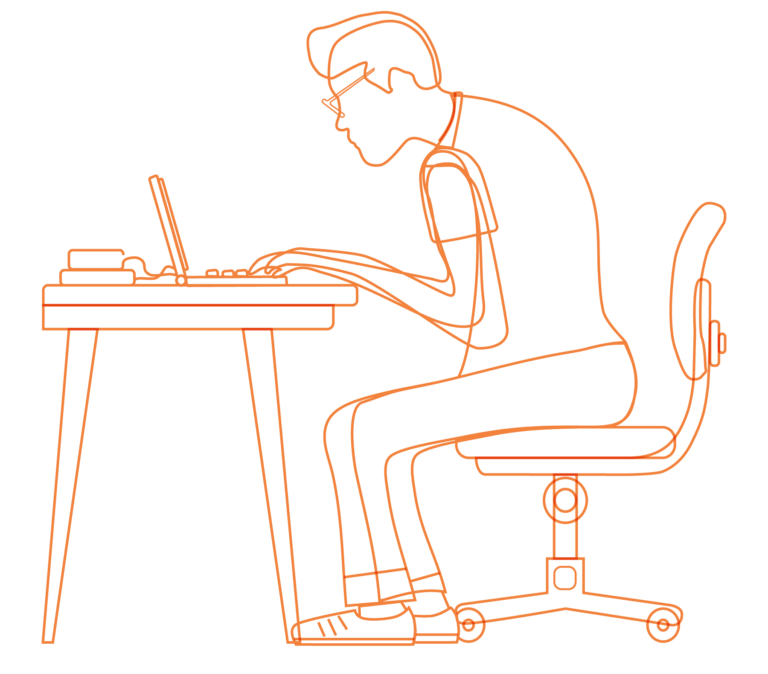
Foggy brain
Strained neck
Sore shoulders and back
Heart disease
Overproductive pancreas
Colon cancer
Disc damage
Weak abs
Tight hips
Soft glutes

Foggy brain
Strained neck
Sore shoulders and back
Heart disease
Overproductive pancreas
Colon cancer
Disc damage
Weak abs
Tight hips
Soft glutes
In order to set up a healthy work station at home, it is important to understand the dangers of sitting for long hours, in unhealthy positions. As is illustrated above, these include:
- Constricted blood flow and nutrient delivery to the spine
- Weakened glutes and abdominal muscles
- Pressure on the neck and other joints
- Eye strain
- Wrist and Knee pain
- Neck muscle strain, nerve impingement and headaches
- Tight hip flexors and limited movement = back pain
- Organ difficulties
- Sluggish digestion, toxin build-up and increased risks of cancer
- Constricted blood flow and nutrient delivery to the spine
- Weakened glutes and abdominal muscles
- Pressure on the neck and other joints
- Eye strain
- Wrist and Knee pain
- Neck muscle strain, nerve impingement and headaches
- Tight hip flexors and limited movement = back pain
- Organ difficulties
- Sluggish digestion, toxin build-up and increased risks of cancer
A vital area of concern is the “chin poke” position we often slip into at the desk or when on the phone. As you can see, the load being taken by the neck muscles and discs of the upper vertebrae, increases hugely as the chin pokes forwards, straining the neck, and even impacting nerves.
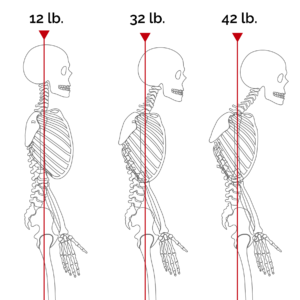
Correct set up Of Your Workstation
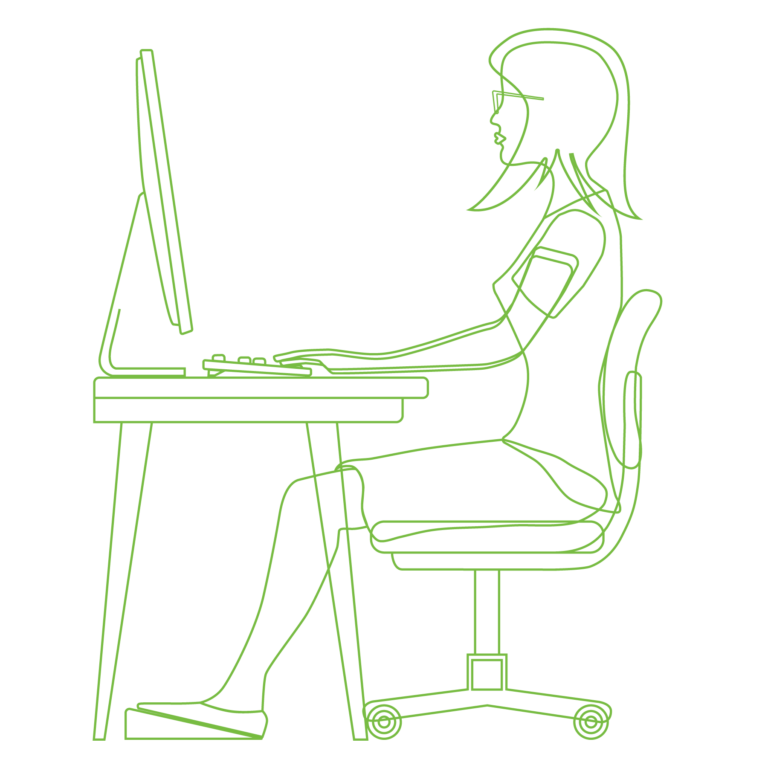
Position the top of the monitor at eye level.
Place the monitor an arms length away
Head is neutral, chin parallel to the ground
Back rests comfortably against the backrest of the chair
Fingers are relaxed with wrists straight
Elbows are bent 90°, close to the body.
Lower or remove armrest
Adjust the backrest height so the
lumber support rests at low back
Adjust the chair height so the
knees and hips are at 90°.
Feet flat on the ground or on a footrest as an alternate position
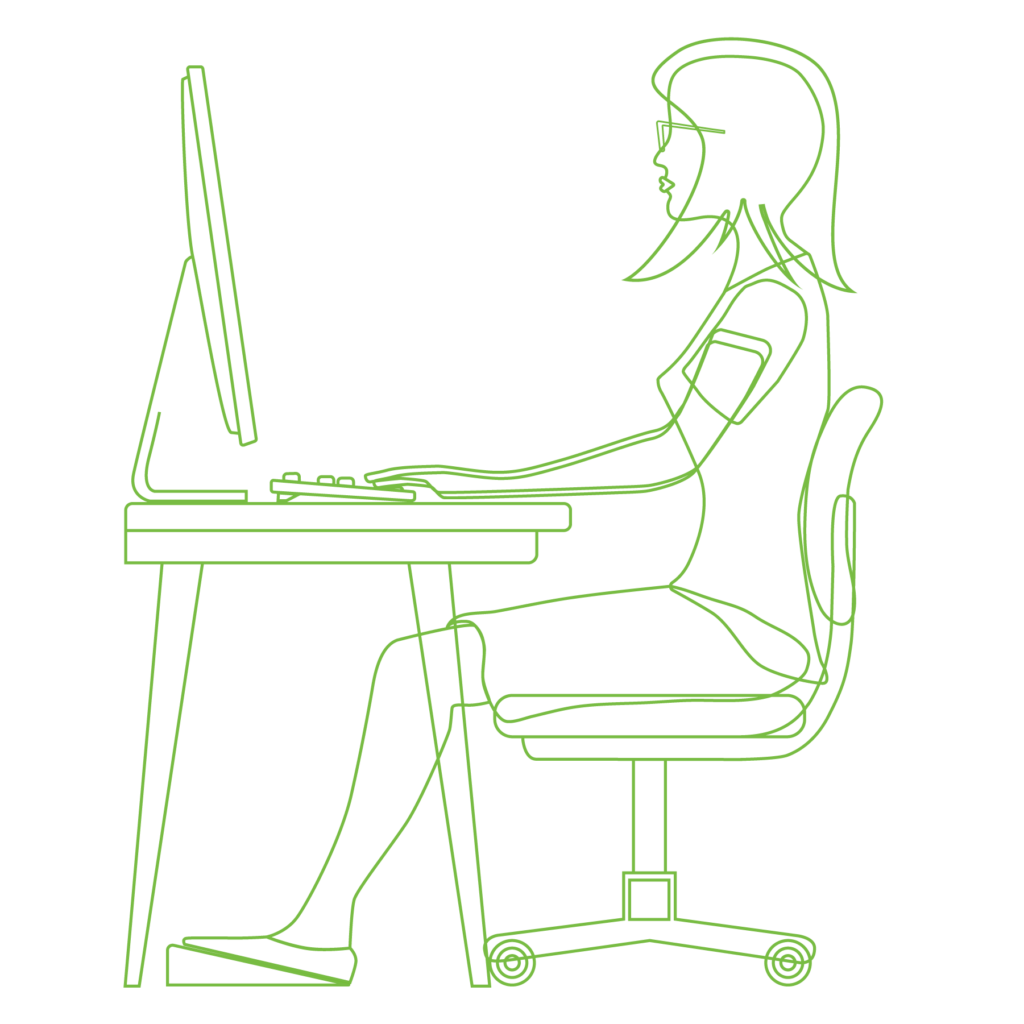
Position the top of the
monitor at eye level.
Place the monitor
an arms length away
Head is neutral, chin parallel to the ground
Back rests comfortably against the backrest of the chair
Fingers are relaxed with wrists straight
Elbows are bent 90°, close to the body. Lower or remove armrest
Adjust the backrest height so the lumber support rests at low back
Adjust the chair height so the knees and hips are at 90°.
Feet flat on the ground or on a footrest as an alternate position
- Screen being in front of your head and at eye level
- Keeping the chin tucked in and spine in alignment
- Core engagement (you may use a Swiss ball or a kneeling chair to help with this)
- Elbows and knees at 90° angle, to alleviate pressure to the joints
- Feet rest on the floor. Avoid crossing the legs for hours on end
- Body is straight, and if you have multiple screens, move your entire body to face the additional screens
- Avoid staring at the screen for long periods. Eyes get strained and need exercise. Look out of the window regularly.
- Screen being in front of your head and at eye level
- Keeping the chin tucked in and spine in alignment
- Core engagement (you may use a Swiss ball or a kneeling chair to help with this)
- Elbows and knees at 90° angle, to alleviate pressure to the joints
- Feet rest on the floor. Avoid crossing the legs for hours on end
- Body is straight, and if you have multiple screens, move your entire body to face the additional screens
- Avoid staring at the screen for long periods. Eyes get strained and need exercise. Look out of the window regularly.
Stretches
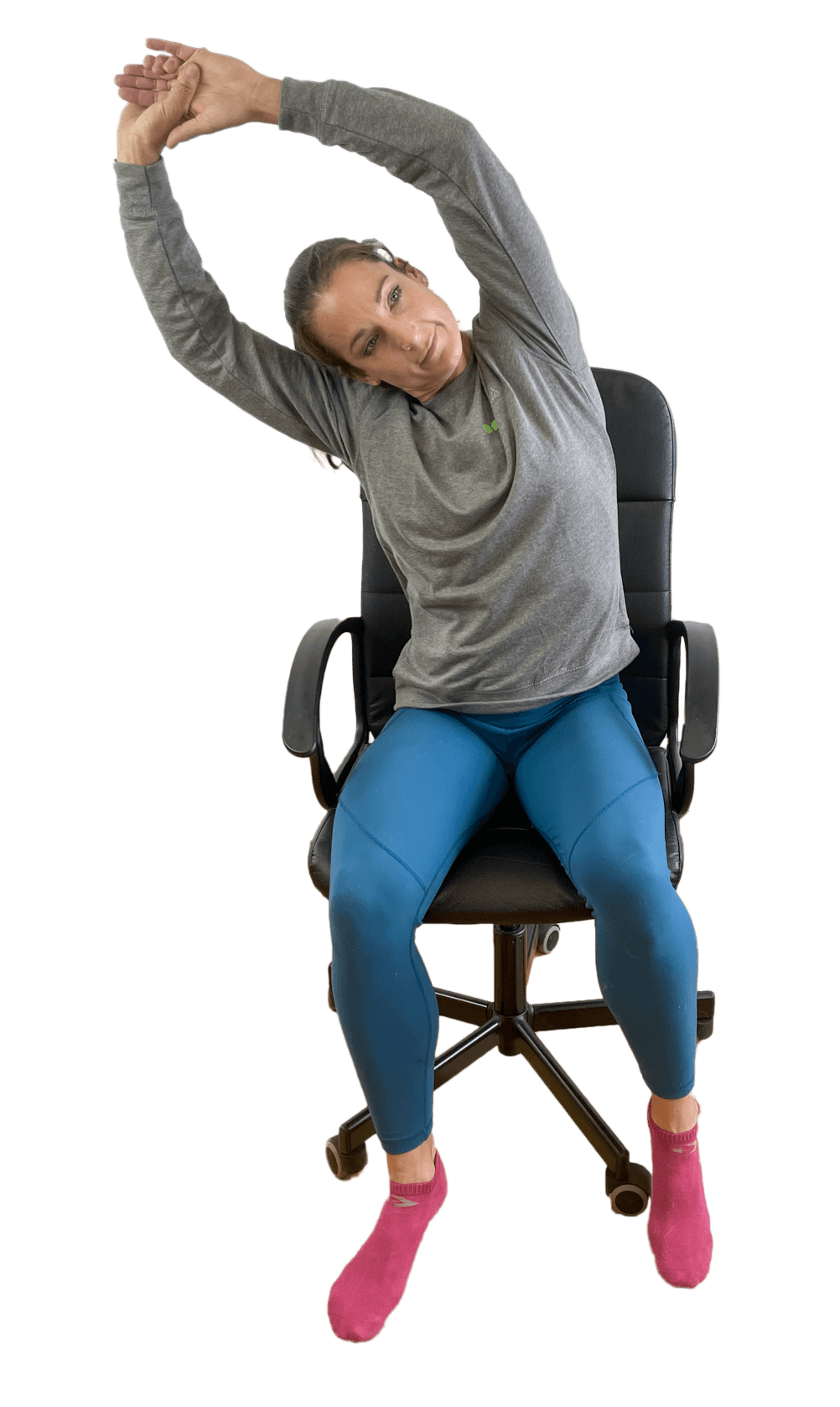
Reach the arms above the head, taking a deep breath. Exhale as you reach the arms from one side to the other, to stretch the back.
Take your hands behind the chair, clasping them together, push your chest forwards, to open the chest and lungs. Bring the shoulders back and down. Take deep breaths.
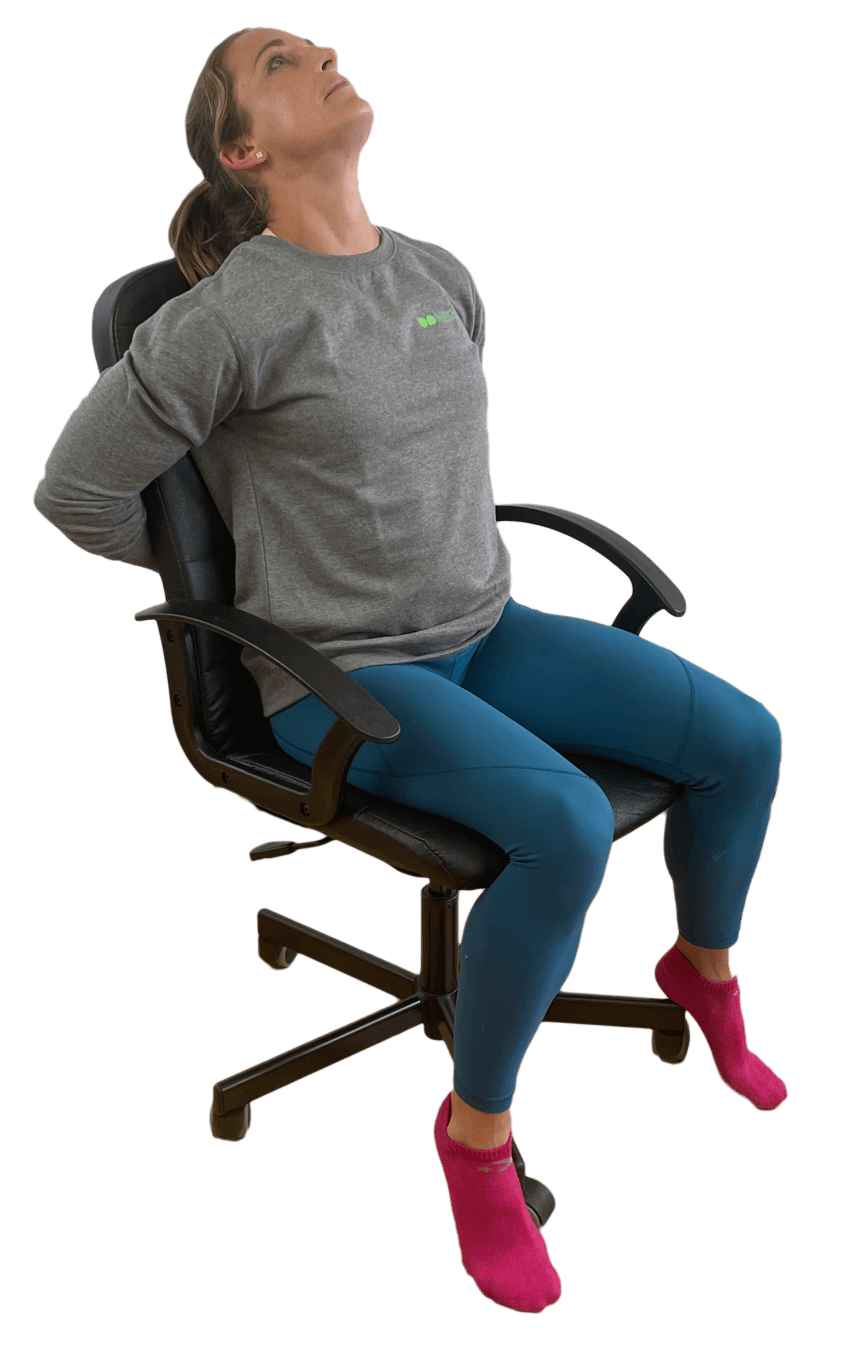
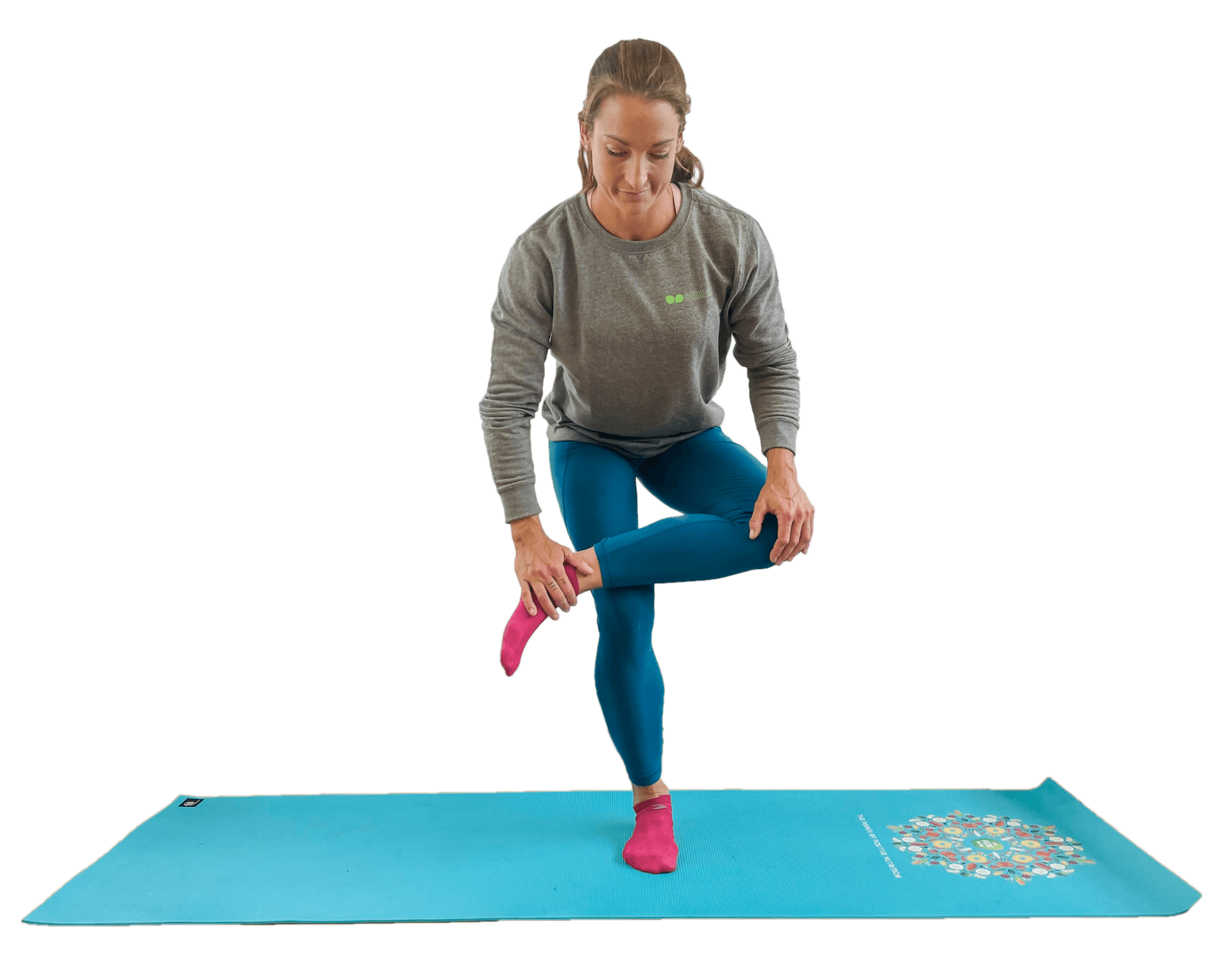
Take the one foot across the body and place on the opposite knee, with the other knee dropping to the side of the body, to open the hips.
Release the neck by tilting the head in each direction, with a deep breath and tucking your chin down and in towards the body.
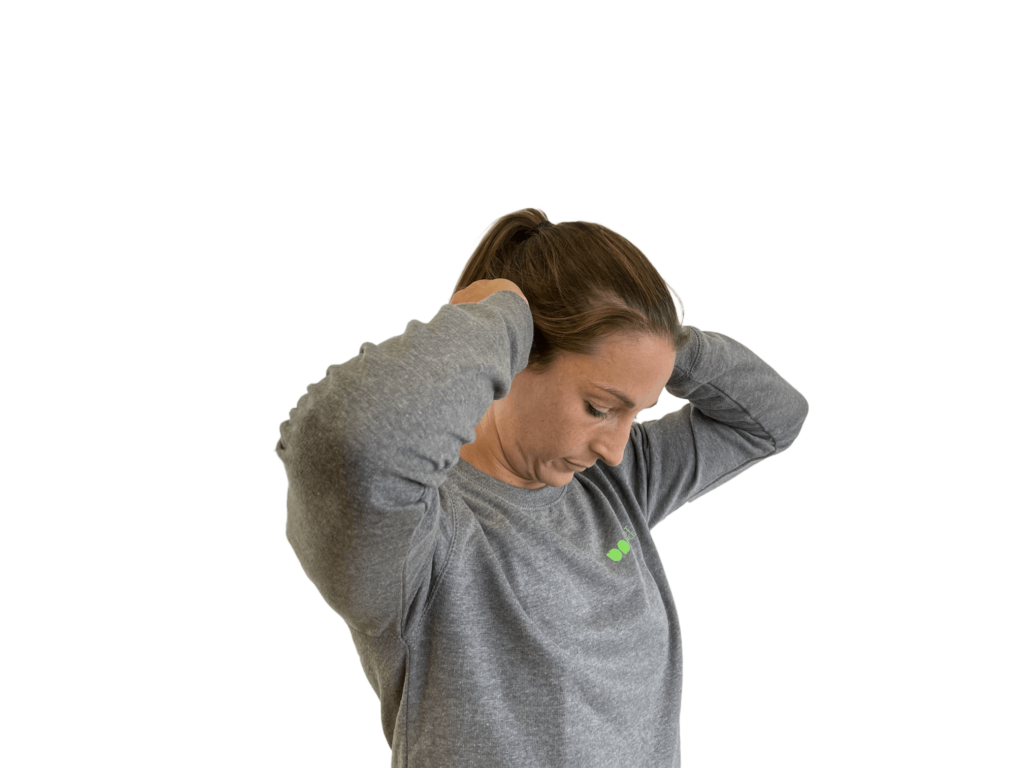
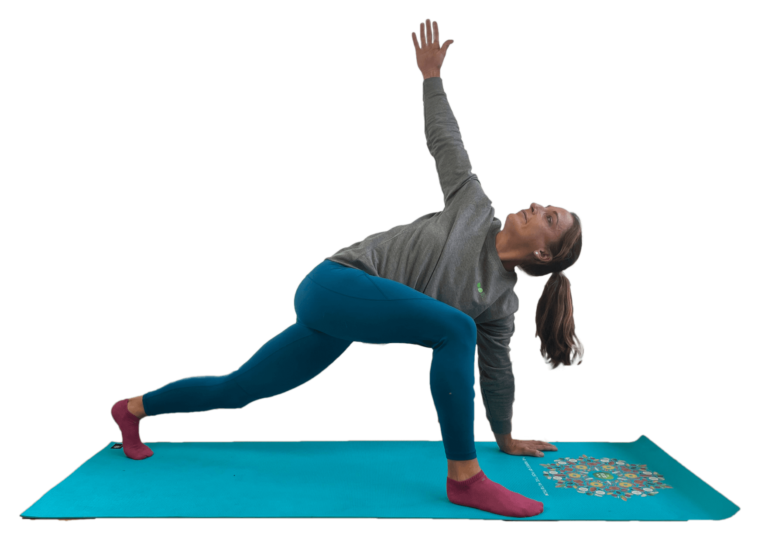
This is a great all over body stretch and exercise you can do daily, and take only a few minutes.
From this position, you can reach the elbow towards the ankle, and then take the same arm up and open it towards the ceiling. Do 10 movements each side.
Spinal Twist: Very helpful for relieving lower back aches and tension.
Leave the lengthened arm on the floor, to also open the chest. The knees can drop to the side, but dont force it.
Hold for 5 breaths each side.
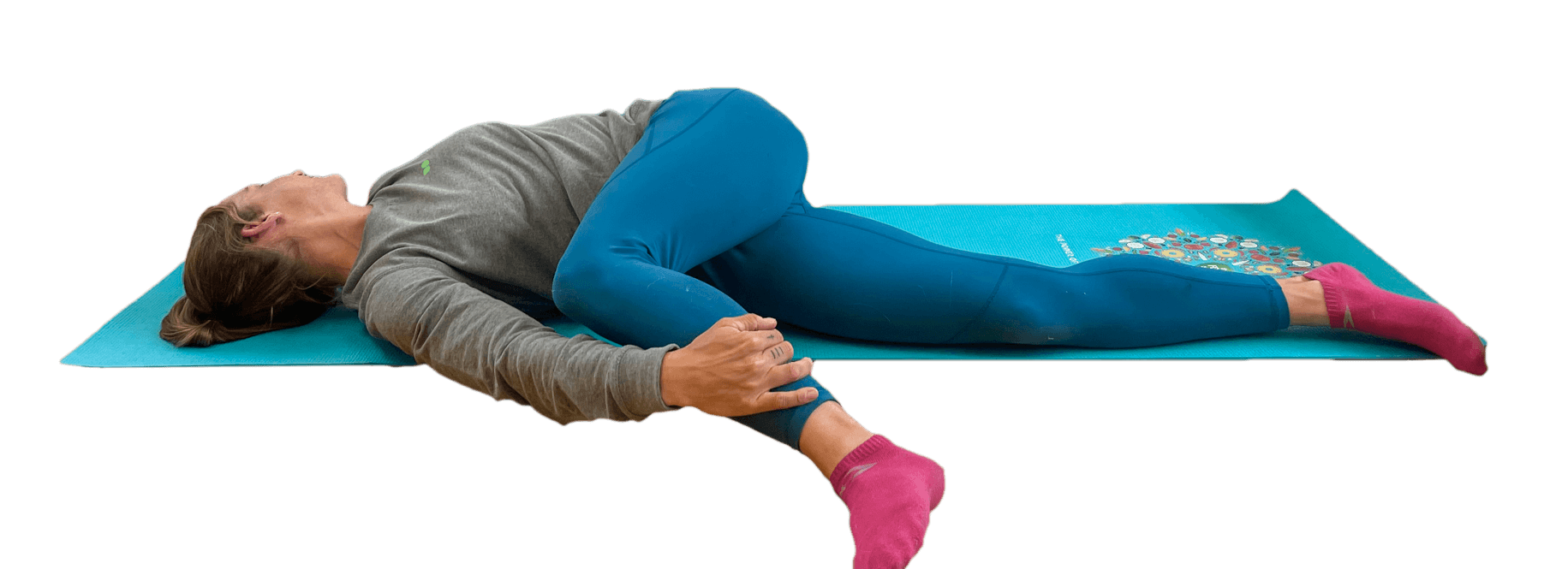
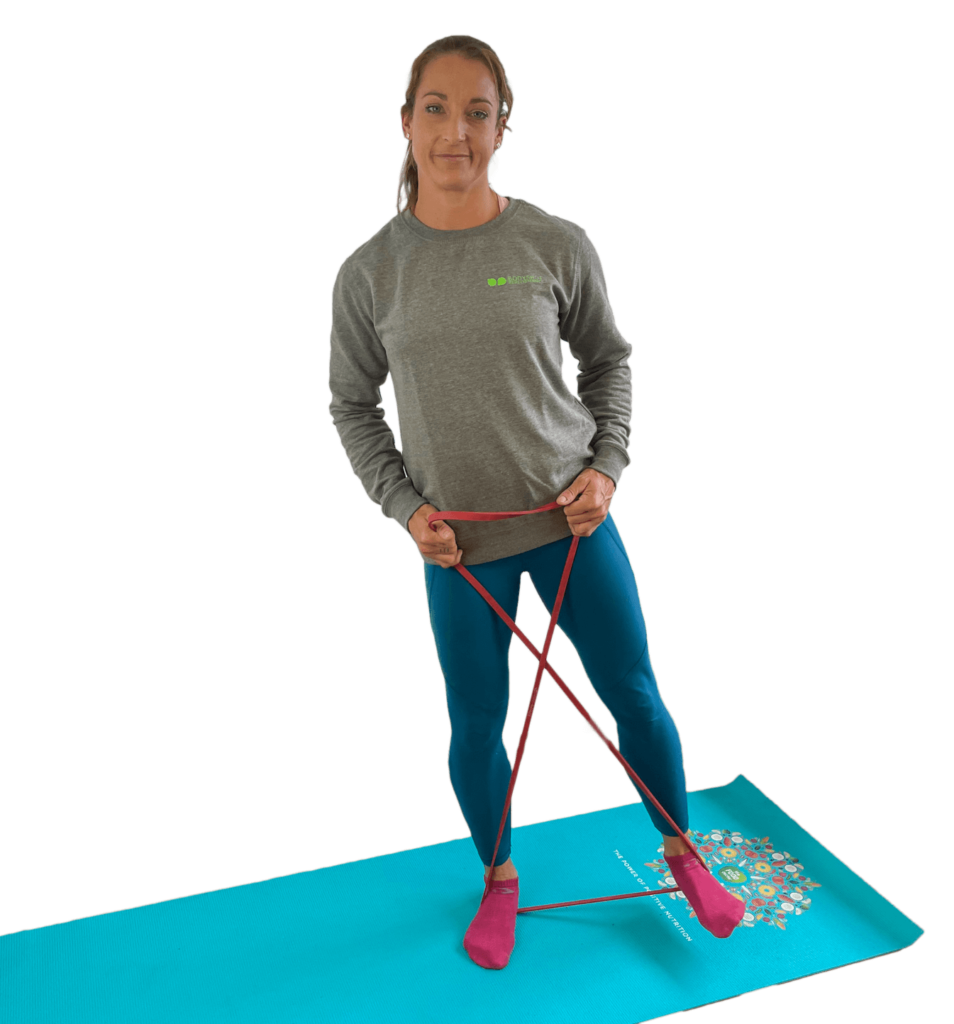
Small, or longer, bands can be placed around the feet, ankle, or knees. Small steps to the side on each side will activate the hips.
Small kicks forwards will strengthen the fronts of the legs and also the glutes.
These can be done when standing, or sitting.
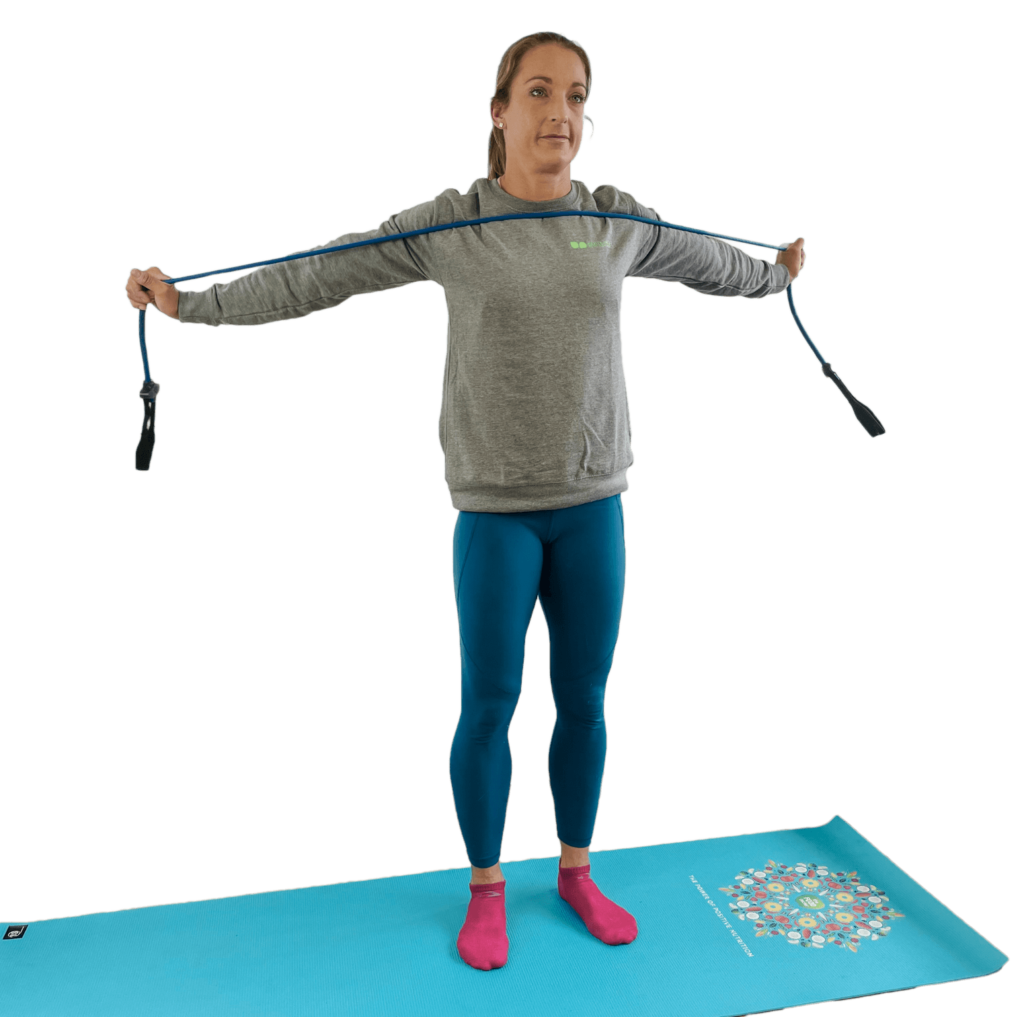
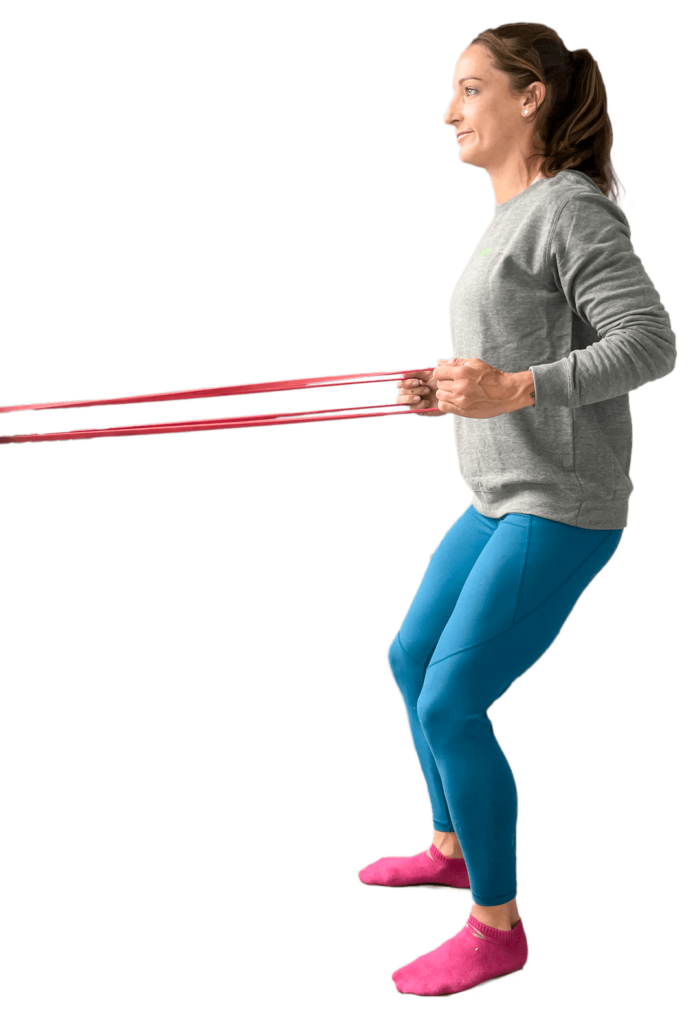
We hope you have found this posture guide useful, we work with businesses to create happy, healthy, resilient teams, bringing more energy and vitality to your workforce. Check out our wellbeing at work services or get in touch and book a free 25 minute discovery call below.